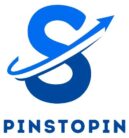In expanding organizations, resources—time, budget, or people—tend to be stretched to the breaking point. In the absence of a clear allocation system, projects get duplicated, priorities clash, and productivity diminishes. Teams repeat efforts, managers cannot see the forest from the trees, and leadership is left wondering whether resources are strategically being employed.
To solve this, businesses are adopting project management tools that unify communication, scheduling, decision-making, and tracking in a single environment. By consolidating how resources are planned and monitored, these platforms prevent waste, make responsibilities transparent, and give leaders confidence that their investments are aligned with outcomes.
Lark Calendar: Visibility into time and capacity
The most underrated resource is time. Employees tend to work on multiple projects and, as a result, have overlaps and missed deadlines when schedules are scattered between systems.
Managers cannot directly measure actual team capacity and thus cannot effectively distribute hours.Lark Calendar clarifies by having schedules in one place among departments. Shared calendars reveal not just availability but also workload allocation, where leaders can spot conflicts before they happen. Automatic time-zone conversion renders geographically dispersed teams as simpler-to-coordinate groups, and regularly scheduled check-ins keep resource usage even in the long term. By connecting Calendar with Docs or Base records, project conversations occur with full context. Calendar makes it so that time arguably the most precious asset is assigned transparently and accurately.
Lark Sheets: Tracking and analyzing resource use
Budgets, hours, and project expenses get monitored in stand-alone spreadsheets within teams. This results in inconsistent data and weak visibility into true resource utilization. Leaders end up making decisions without a clear view of where resources are flowing.
Lark Sheets addresses this through real-time, collaborative monitoring that aggregates data into a single trusted system. Teams can record resource allocation by project, track costs or hours worked, and chart trends with integrated functionality. It brings areas of over-expenditure or under-usage to the surface, and filters make it easier for leaders to analyze exactly what they need to know. Because Sheets is integrated with other Lark tools, data isn’t siloed—it’s incorporated into the larger context of action. This converts simple numbers into actionable insights that guide smarter deployment.
Lark Approval: Structured decision-making for resources
Resource allocation is often a tough call: approving budgets, allocating personnel, or prioritizing projects. Unstructured, these approvals get buried in email threads, resulting in delays and ambiguity. Employees wait, while managers have no visibility into outstanding requests.
Lark Approval provides the governance to effectively handle the resources. Requests for resources can be made by employees using standardized forms to ensure consistency and clarity. Managers can view outstanding approvals from the flow, and all the decisions are recorded for accountability. Notifying sends timely action, avoiding bottlenecks. To streamline even further, Approval supports an automated workflow that routes requests directly to the right stakeholders. This means resources move quickly to where they’re needed most, without sacrificing oversight.
Lark Meetings: Collaborative planning in action
Cross-team discussion is often needed for planning resource allocation. Leaders must talk about priorities, check capacity, and revise plans as circumstances change.
Such discussions far too often take place in fragmented systems, with instruction being lost as soon as the conference closes. Lark Meetings makes resource planning collaborative and transparent. Virtual discussions are supported by screen sharing and live chat, where all voices are heard. Shared notes capture key decisions, and recording has full context for absent stakeholders. Tasks can be created straight from meeting notes, converting talk into action. By integrating planning into Meetings, resource planning becomes not an isolated top-down endeavor but a cooperative endeavor where teams agree on the same priorities.
Lark Mail: External correspondence tied to allocation
Resources are not only controlled internally—much allocation decision relies on outside parties like vendors, customers, or government regulators. With fragmented email systems, it is difficult to link external communication with internal processes, leaving blind spots in visibility.
Lark Mail fills this gap by bringing external communication into the same system where projects are coordinated. Supplier negotiations, client inquiries, or budget confirmations can be handled by teams without losing visibility. Shared mailboxes give transparency to compliance or finance teams, and archiving secures correspondence. By connecting emails with Docs or Base records, Mail ties external input to direct internal resource allocation. This makes decisions with partners or suppliers transparent and commensurate with organizational priorities.
Lark Base: A structured hub for resource allocation
At the core of resource management is having a central system of record. When project allocations, budgets, and staff responsibilities are tracked in silos, leadership cannot make informed decisions.
Lark Base provides the structure organizations need by allowing customizable databases for resource tracking. Teams can log allocations by project, monitor progress against budgets, and track resource dependencies in one place. Dashboards give leaders high-level visibility into resource distribution, while filters make it easy to drill into specifics. Linked records tie resource data to approvals, documents, or schedules, ensuring allocation is always contextualized.
Conclusion
Resource allocation is too valuable to be left to fragmented systems. In the absence of visibility, organizations spend time, duplicate effort, and misalign priorities. With single platforms, allocation becomes transparent, effective, and aligned to strategy.
That’s where Lark stands as a robust project management software: Calendar keeps hours and capacity in their place, Sheets provides real-time visibility into budgets and hours, Approval simplifies resource decision making with workflow automation, Meetings turns allocation into teamwork, Mail ties outside correspondence to inside planning, and Base provides the discipline of project management software with clarity. Together, these tools replace guesswork with visibility, making resources not only expended but expended well.
For growing companies, wiser allocation is not just about saving resources—it’s about unleashing potential. Integrated systems bring the organization to manage resources effectively and the quick response capability to scale with confidence.
ALSO READ: Newtopy: Everything You Need to Know

